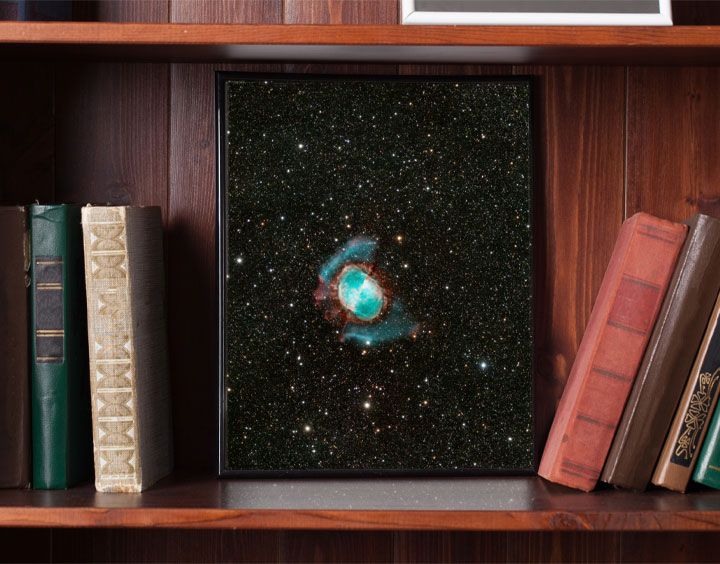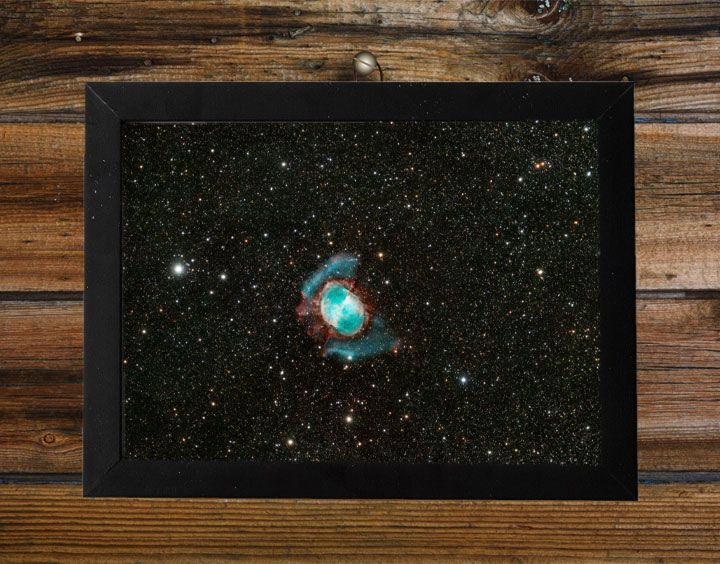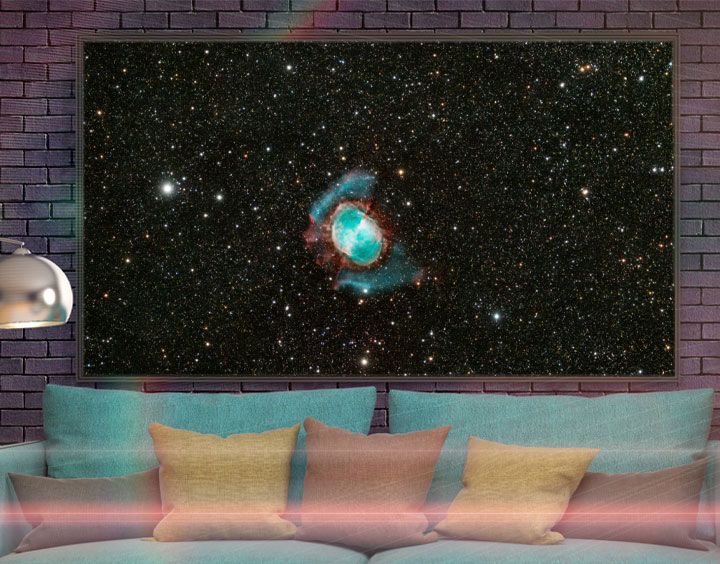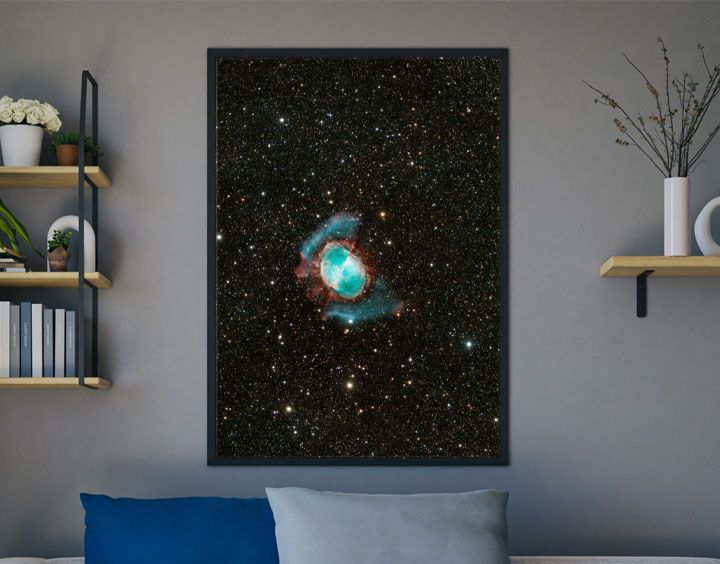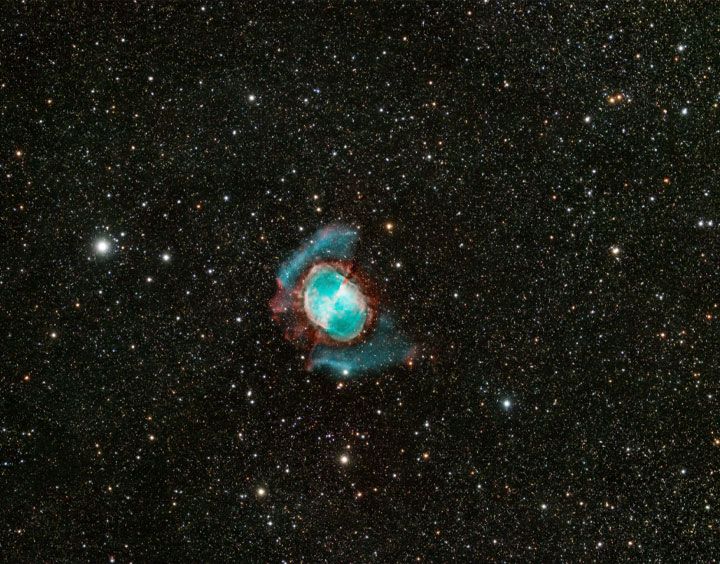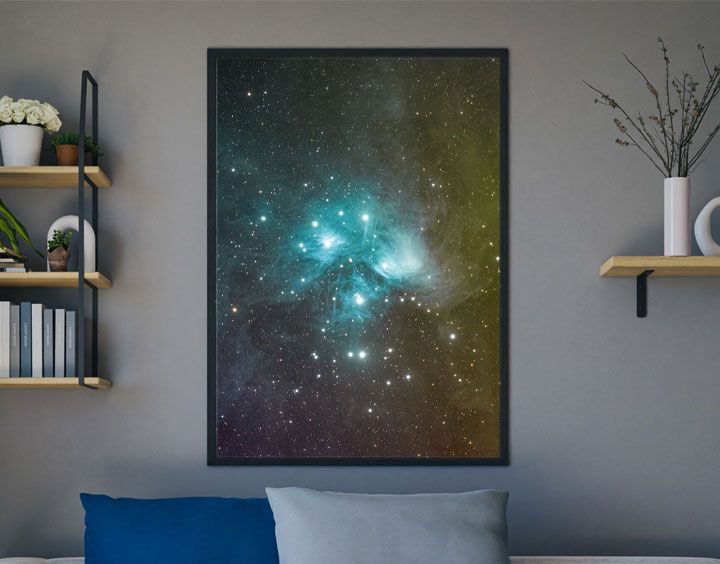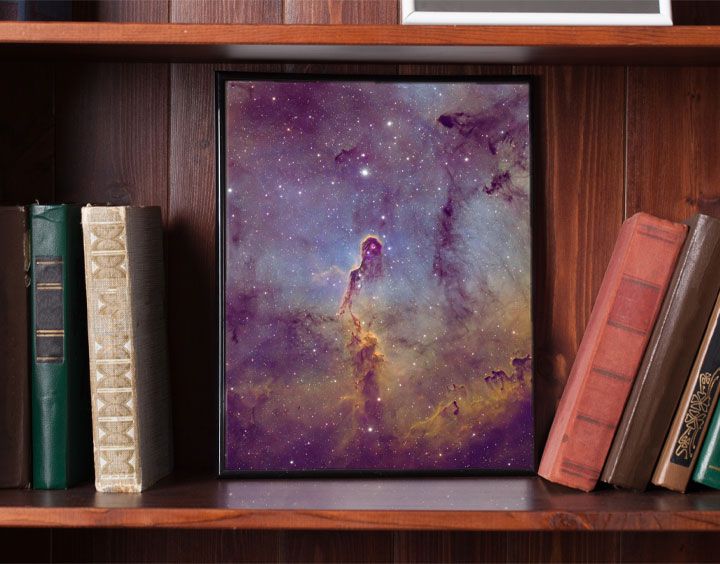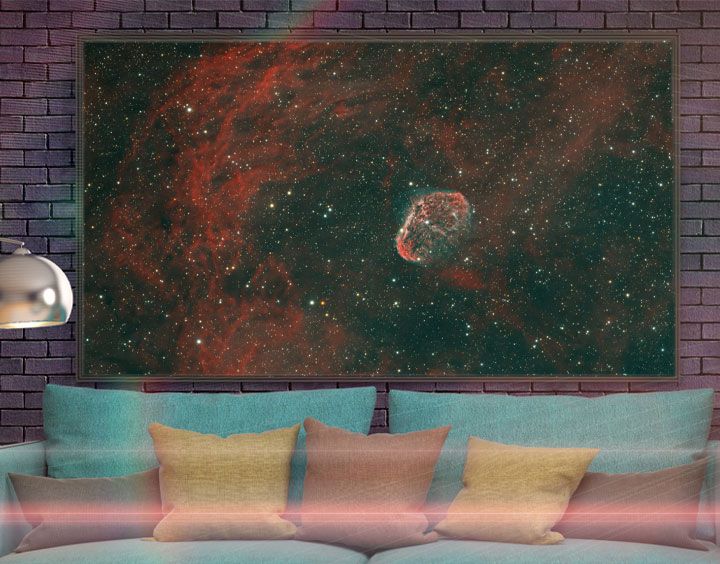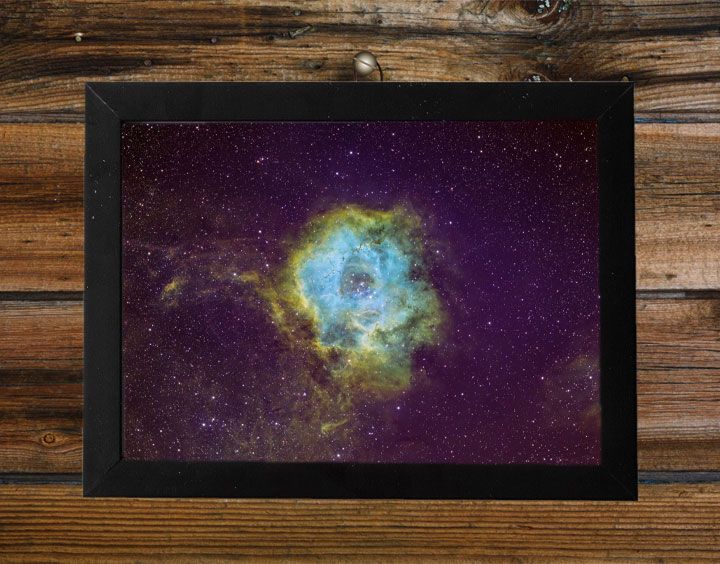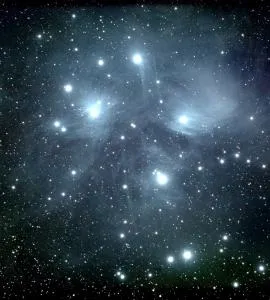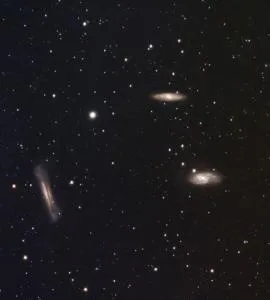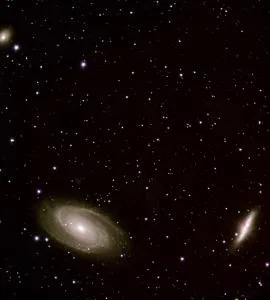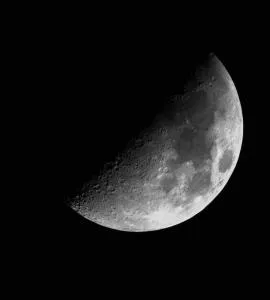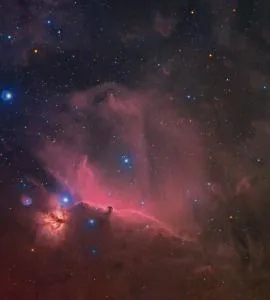Trifid and Lagoon Nebulae captured together by amature astronomer Richard Harris at Ozark Hills Observatory using a 4" Takahashi telescope and 62 megapixel camera.
Astronomy Print Store
Astrophotography by Richard Harris
The M27 Dumbbell Nebula, also known as Messier 27 or NGC 6853, is one of the most famous and frequently observed planetary nebulae in the night sky. Located approximately 1,360 light-years away in the constellation Vulpecula, it was the first planetary nebula ever discovered, identified by Charles Messier in 1764.
The Dumbbell Nebula gets its name from its distinctive shape, which resembles a dumbbell or an hourglass when viewed through a telescope. This shape is created by the expanding shell of ionized gas ejected from a dying star at the nebula's center. As the star expels its outer layers, it forms a glowing cloud of gas that is illuminated by the remaining hot core of the star, now a white dwarf.
With its intricate structure and vivid colors, the Dumbbell Nebula is a popular target for amateur astronomers and astrophotographers. The nebula's appearance can vary depending on the wavelength of light in which it is observed, often displaying hues of red and green due to the ionized hydrogen and oxygen gases. Observing the Dumbbell Nebula offers a glimpse into the final stages of a star's life cycle and the ongoing processes of stellar evolution.
Details
| Product Type | Physical |
|---|---|
| Weight | 5 lbs 0 oz |
| Dimensions | 24in x 5in x 36in |
| Item# |
|---|
Customer reviews
0 out of 50 global ratings5
4
3
2
1
